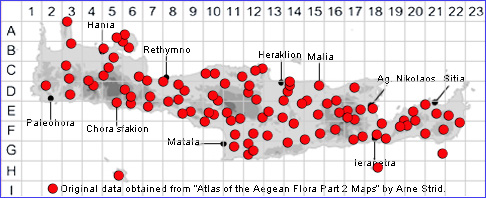SPECIES DESCRIPTION
PARENTUCELLIA LATIFOLIA
Family and Genus:- See- OROBANCHACEAE
Common Names:- Broadleaf Glandweed, Red Bartsia, Southern Red-bartsia.
Homotypic Synonyms:- Bartsia latifolia, Bellardia latifolia, Eufragia latifolia
Euphrasia latifolia, Lasiopera latifolia, Trixago latifolia
Meaning:- Parentucellia (L) For Thommaso Parentucelli (1397-1455), Pope
Nicholas V, who founded the Vatican Apostolic Library and Botanic Garden.
Latifolia (L) With broad leaves.
General description:- Semi-parasite, herbaceous glandular-hairy plant.
Stems:-
1) 0-50(-70) cm, stiff, covered in sticky glandulous hairs, generally unbranched,
often tinted of reddish.
Leaves:-
1) Cauline, opposite, simple, 4-12 x 3-5 mm, in several pairs, narrowly oblong-
lanceolate, coarsely and obtusely serrate.sessile, veins palm-shape.
Flowers:-
1) Flowers in a dense terminal spike, 3-7 cm at anthesis, elongating in fruit. White,
with a pink standard,
2) Upper bracts, large, broadly ovate, entire.
3) Calyx, 6-10 mm, with 2 unequally lobed lips, and 5 narrow, partly fused sepals
a) teeth, about half as long as the tube. .
4) Corolla, large and showy (20-25 mm); 2 lipped;
a) upper lip, narrow, hooded, rose-pink.
b) lower lip, broad, 3-lobed, white, with 2 bulges on middle lobe.
5) Style 1, long, slender, persistent.
6) Stamens, 4, with very hairy anthers.
Fruit:-
1) Capsule, c. 10 mm, ovoid, pilose.
Key features:-
1) Calyx-teeth, about half as long as the tube.
2) Corolla, reddish-purple (rarely white), persistent.
Habitat:- Meadows, fallow fields, seasonally damp, rocky places in dry open
shrubby vegetation and open woodland. 0-1400 m.
Distribution:- Common throughout Greece. - W Europe, Mediterranean, region and
SW to C Asia. Widespread and common on Crete.
Flowering time:- Mid-Mar to June.
Photos by:- Steve Lenton

